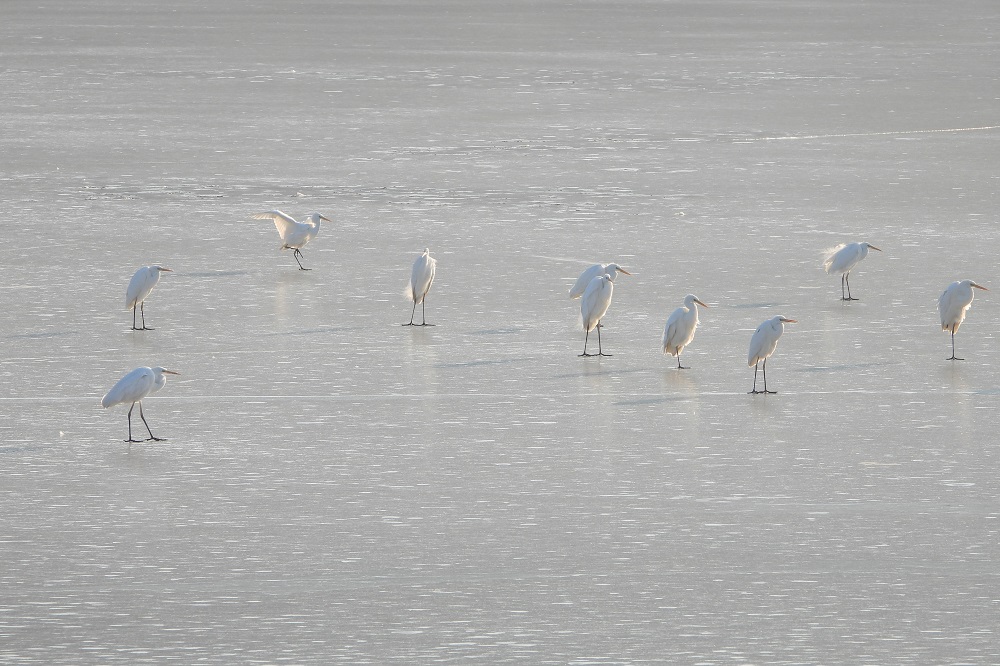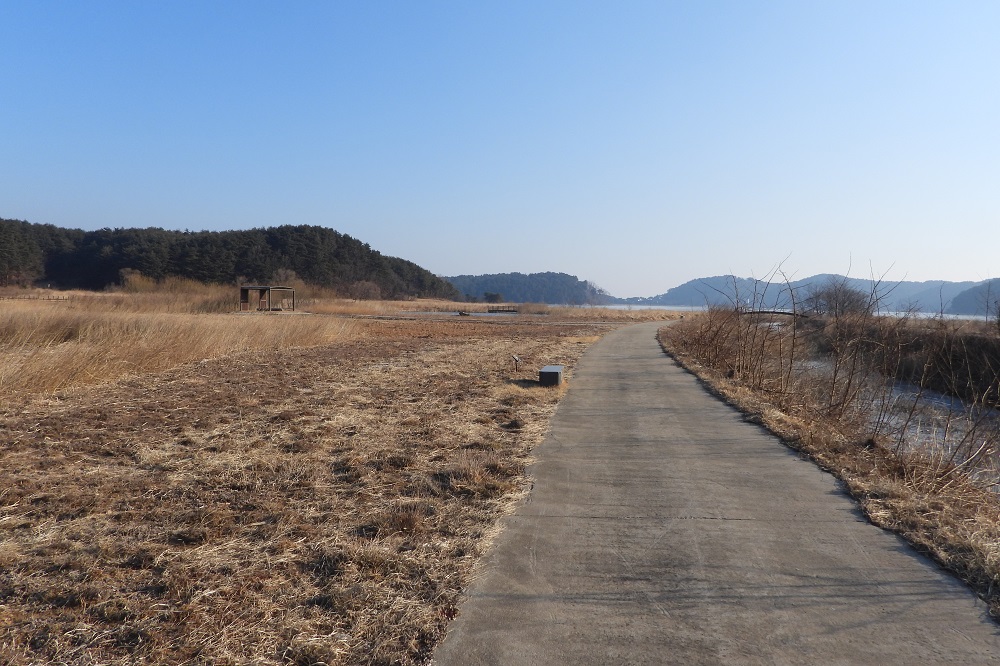Dr. Bernhard Seliger, Dr. Hyun-Ah Choi (Hanns Seidel Foundation, Birds Korea)
After the 2022 Pyeongchang Peace Forum, the was time for a quick check-up on birds in Goseong County. Goseong, a divided county directly at the inner-Korean border, with roughly half of the county, including the capital Kosong, in the Northern half, has an incredible biodiversity due to incredibly beautiful and diverse landscape: it rises from the sea to 1700 m in Seoraksan in the South and Kumgangsan (Geumgangsan) in the North. Between the sea and the mountains, rice-fields and large lagoon lakes like Seongji-ho and Hwajinpo plus numerous small streams going from the mountains to the sea offer habitat for birds. Unfortunately, dense population, ever growing infrastructure, proto-industrialization of agricultural landscapes and “improvement” of rivers and lakes took much of the original beauty and diversity away. In fact, where military installations do not any more protect the habitat, like in the rocks adjacent to the coast, where until last year a fence prevented people from climbing, today we find people in search of sea fruits, fishing, climbing from morning to evening. A nice thing to have, if it were not the only habitat left for many species, at least in South Korea. No wonder that some species for which Goseong was famous in the past, like mute swans on the lagoon lakes or Stejneger’s and American scoters at the northern beaches, today can scarcely be found.
In this quick survey, the following notable species have been found:
- Two Yellow-billed loons in the seas between North and South Korea from Goseong Unification Observatory: the species, extremely rare in South Korea, has been observed in several surveys of Kumgangsan Haekumgang (sea) side from the North from 2016-2017.
- A Solitary snipe at a small river below a temple close to the CCZ area. It was the first time for me to see this species in Goseong (unfortunately without a photo).
- A flock of around 600 Greater White-fronted Geese and around 300 Tundra Bean Geese, mixed with around 20 Taiga Bean Geese. Last year, also larger flocks of geese have been observed in the area. The seemed constantly disturbed, and maybe were on the verge of northward migration.
- A group of 16 Harlequin ducks at Ayajin beach and 7 additional ones in Daejin coast.
- A group of 19 Sanderling at Munam beach (presumably the flock usually roosting in Ayajin beach.)
- Raptors included Cinereous Vulture, White-tailed Eagle, Upland Buzzard, Eastern Buzzard, Eurasian Sparrowhawk, Japanese Sparrowhawk, and Kestrel.
- Only 7 Stejneger’s scoters (from Unification Observatory) and no American scoters were an all-time low.
The complete lists for both days can be found here:
Goseong on February 24: https://ebird.org/checklist/S103612939 (Ayajin – Seongji-ho – Ganseong Namcheon – Ganseong bukcheon – Hwajin-po lagoon lake)
Goseong on February 25: https://ebird.org/checklist/S104271417 (Hwajinpo Northwestern wetland – Daejin coastline to Unification observatory – rice-fields to CCZ – Geonbongsa)
Other observations:
One of the sad things is the constant deterioration of Hwajinpo lake and its surrounding wetlands. After the original “beautification”, when a lot of money was used to transform wetland and reed areas into park-like or golf-course like areas, there is an ongoing building of ever-new structures and ways through the few remaining wetland areas. Already now, the last real good part is outside the original wetland area now transformed into a park, but I dare not think of a future when this is also “improved”. And, inside the park, at least half of the reed area has been completely cut down, reducing the sparse habitat for buntings and other birds further. A different attitude towards habitats and habitat management is urgently needed.
My first visit to Goseong was in 2000 or 2001, and since 2004 I am a regular visitor. One of my dreams was always to see the removal of fences along the seaside, which seemed so superfluous (in a military way) and ugly and disturbing from an aesthetic point of view. Today, after it finally happened, I doubt my former dream…the level of disturbance grew radically, with early-morning walkers on beaches all around. Certainly, it is difficult to deny them the pleasure. But it remains a fact that the former diversity in close-to-view birds, among them rare gulls and ducks, has completely gone from the area.









